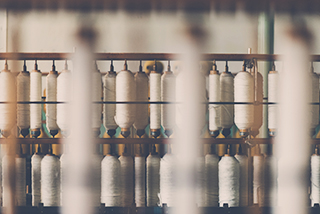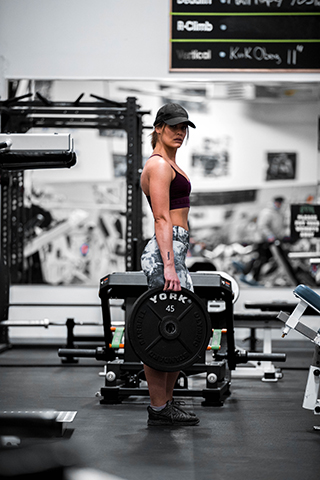
Leggings have been popular for decades now and people seem to enjoy the comfort they provide. The majority of women nowadays consider leggings as a fashion necessity.
They are not only used to wear while training but also in our daily lives. Each year more and more cool designs emerge and in the meantime also the materials keep getting better.
We want leggings to be comfortable, breathable, and resistant. To achieve that, the right combination of materials is needed.
Today we will talk about Spandex also known as Lycra or elastane, as one of the main materials used in leggings.
Table of Contents:
- 1. History of Spandex
- 2. How Much Spandex is Needed for Leggings?
- 3. What Are the Most Used Spandex Quantities in Leggings?
1. History of Spandex
Like many other synthetic fibers, Spandex was created during World War II. During the war, rubber was widely needed and its price wasn’t stable.
That’s why it was necessary to create a synthetic version of rubber. In 1940, were manufactured the first polyurethane elastomers.
Spandex was created around the same time as Nylon, which was stiff and rigid.
That’s when scientists had the idea to combine them to get elastic and lightweight fibers.
Don’t miss: Nylon vs Polyester Leggings: Which is Better? Which Should You Choose?
Farbenfabriken Bayer was one of the pioneer scientists that experimented with polymer chemistry.
In 1952 it earned a German patent for its synthesis. The final version of the fibers was created by DuPont and the U.S. Rubber Company.
DuPont branded the fiber Lycra and began to produce it in 1962. So when we say Lycra, we are talking about spandex or elastane.

Spandex is created with a wide variety of production processes. It starts with the production of the polyurethane polymer which is formed by reacting a polyester with a diisocyanate.
This polymer is then turned into fiber using a method called the dry spinning technique.
The fabric created with these fibers can stretch 5-8 times its normal size, and this is what makes them so popular in leggings and other sportswear.
What makes the difference in different textiles that include spandex, is the amount in percentage.
For different usage purposes, we have a different percentage of spandex. The question is: Which is the best percentage for leggings?
The video will be loaded from YouTube.com, a third party. If you play it, you accept their terms of service, and their use of cookies.
2. How Much Spandex is Needed for Leggings?
Body-hugging spandex leggings are highly used in our daily lives. The quantity of spandex needed in leggings will depend on the end-use and also the stability of the fiber.
Usually, for the leggings that are worn frequently, the approximate percentage of spandex used varies from 6% to 10%.
On the other hand, denim leggings, or in a more familiar word, jeggings have approximately 6% of spandex. The motive under this low percentage of spandex is that cotton yarn is thicker than microfiber and the role of spandex is only to keep it tight.

Spandex is extremely popular in sportswear. For every person who likes outdoor and indoor exercise, wearing high-quality leggings is essential, so the spandex fabric used must provide the best option that fits their demand.
Leggings used for any type of exercise need to have a mixture of polyester or nylon microfiber and a percentage of spandex, approximately 15-20%.
Compression-based items have less Lycra built-in. This percentage should be enough to permit an enormous scope of movements, yet at the same time give the compression required to support muscle groups.
This blend is great for durability, fuzziness, elasticity, support, and the customers strive to buy these kinds of products.
3. What Are the Most Used Spandex Quantities in Leggings?
The balance of polyester and spandex varies between different brands. Usually, cheaper brands use 90% polyester and 10% spandex which makes the leggings lose their shape after some washing.
With a little Nylon added to the combination, the leggings will tend to “hold you in” more, and in the meantime, the product doesn’t lose its softness and remains comfortable.
If the brand uses a combination of 87% nylon and 13% spandex the leggings will be a little heavier and that is good because no one likes to wear see-through leggings that wick sweat.
As an example, the most used percentage of spandex in Nike’s leggings is 17%, while Adidas uses 64% nylon and 36% spandex interlock, which makes the leggings hug the body with a compression fit that supports and sculpts the body.
When a brand decides to add cotton, the fabric becomes more elastic, and spandex adds more elasticity to rigid fabrics like polyester.
Even if a tiny amount of this material is added to the combination, these fabrics tend to become much stretchier.
Companies usually take great care in deciding the proper materials for their designs, and for athletic clothing, they should take extra care to extend the life of the product.
